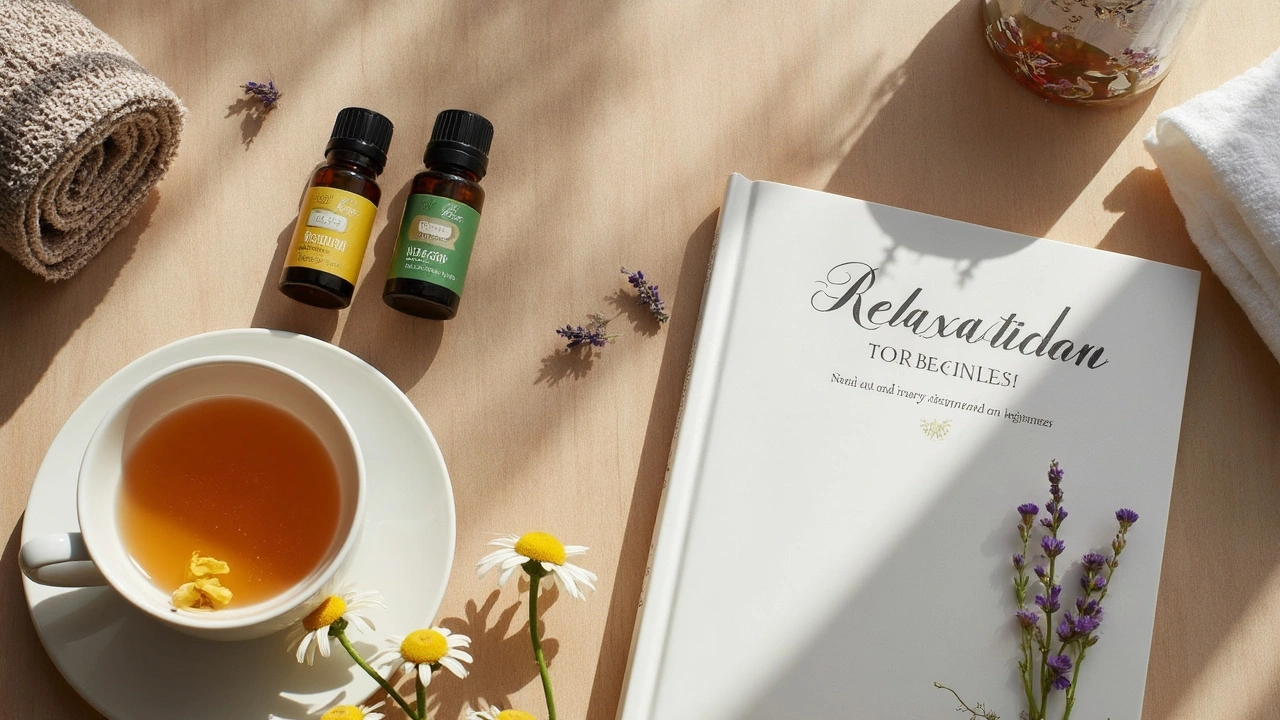What is a Swedish Massage?

What is a Swedish Massage? Your Guide to Relaxation
Kicking off a conversation about relaxation without mentioning Swedish massage? Pretty much impossible. This style stands as the gold standard for anyone who wants to feel human again after a stress-packed week. Think of it as an instruction manual for letting your muscles—and your brain—check out for a while. Swedish massage is known for gentle, methodical, and wave-like strokes that coax tension out of every corner of your body. It’s not about pain or pushing your limits. Instead, it’s the friendly handshake of the massage world: approachable, effective, and reassuring for newbies and veterans alike. If you find yourself feeling worn out (who doesn’t, honestly?), or just craving that “ahhh” moment, Swedish massage brings it in spades. This article peels back the curtain—covering not just the strokes and famous benefits, but tips, science tidbits, what to expect on the table, and what makes this style timeless.
You’re getting more than a list of fancy terms. We’ll dissect each core technique, toss in some pro tips, and answer the questions real people ask—like, "Do I need to strip down to my birthday suit for a Swedish massage?" or "Will it zap all the knots out of my shoulders?" If you’re pondering whether a Swedish treatment is for you, keep going. This is your personal roadmap for the most classic relaxation massage in the world.
Understanding the Basics of Swedish Massage
Origins of Swedish Massage
The Swedish massage style goes way back—think mustached nineteenth-century professors and Scandinavian gyms. Per Henrik Ling, a Swedish fencing dude turned health pioneer, developed the concept in the early 1800s. He wanted a method that combined science, movement, and manual therapy. The system he cooked up focused on flushing tension from the body, improving circulation, and supporting recovery. What started as a technique for athletes seamlessly slid into spas around the globe. Now, wherever you see a ‘relaxation massage,’ odds are, it borrows from Ling’s system.
Core Techniques of Swedish Massage
So, what actually happens during a Swedish massage? Five main moves lead the dance—each with its own vibe:
- Effleurage: These are long, sweeping strokes, light to moderate pressure, gliding across the body. Perfect for relaxing your mind and warming up the muscles.
- Petrissage: Kneading, squeezing, and rolling the soft tissue. Imagine gentle dough-massaging, without the carbs—this boosts circulation and loosens knots.
- Tapotement: Rhythmic tapping, cupping, or chopping with the sides of the hands. It perks up tired muscles (no ninja moves involved, just gentle percussion).
- Friction: Deeper, circular movements. Friction targets specific spots and helps dissolve tightness that lingers beneath the surface.
- Vibration: Light shaking or trembling—quick, repeated movements that help muscles let go of tension.
Therapists pick and choose, mixing up strokes based on what you need most. Swedish massage is always about working with your body, not against it.
How It Differs from Other Massages
Any time you book a massage and aren’t sure what you’re getting, it’s probably a Swedish one. Other styles—like deep tissue, sports, or shiatsu—go much deeper or take a more clinical approach. You won’t leave sore or battle-bruised after a classic Swedish session. Instead, it’s the perfect intro if you want to dip your toes in without wincing your way through. If you want specific relief for stubborn or chronic pain, there are other techniques, but for stress-busting and smooth relaxation, nothing beats Swedish.
Who Can Benefit from Swedish Massage?
Honestly? Just about anyone above the age of 18. First-timers, busy professionals, people recovering from everyday muscle fatigue, and even folks with certain chronic pain (as long as they have medical clearance) can benefit. If you just want to zen out, Swedish is for you. It’s adaptable enough for therapists to adjust pressure—or avoid certain areas—based on pregnancy, mobility issues, or sensory sensitivity. Just always share health info beforehand for the safest, best experience.
Benefits of Swedish Massage for Body and Mind
Stress Relief and Relaxation
Next time life throws you yet another deadline or toddler tantrum, know that Swedish massage has your back—literally. It’s clinically shown to help reduce cortisol (the stress hormone), supporting both mind and body. When calm, wave-like strokes flow across your skin, signals travel to your brain telling everything to slow down. It’s a surefire recipe for switching from fight-or-flight mode to a blissed-out, rest-and-digest vibe. Clients often say they feel mentally "lighter" after just one session, with lingering relaxation for days.
Improved Circulation and Flexibility
Swedish massage isn’t just about the feels—it has practical payoffs. The gliding and kneading stimulate blood flow, delivering more oxygen and nutrients to muscles. This process helps flush out waste products and kickstarts healing. Over time, this isn’t just good news for athletes; anyone who sits a lot, stands a lot, or just lives a normal life, will feel the difference. Better circulation equals warmer hands and feet, healthier skin, and sometimes even improved digestion. Plus, joints move easier after regular sessions.
Muscle Tension and Pain Relief
Swedish massage tackles everyday aches and pains, especially if you’re stiff from sitting or standing. By working on the outer muscle layers with just enough pressure, it helps release muscle knots without unleashing epic soreness. Don’t expect to walk out feeling like you’ve run a marathon. It’s more like a tension "reset." People recovering from light injuries (and cleared by their doc) often use Swedish as gentle rehab.
Mental Health Perks
There’s more to it than muscle mellowing. Swedish massage has a ripple effect: contact and rhythmic strokes melt anxiety, boost mood, and even help with sleep. Research from wellness orgs and therapists suggests that a solid rubdown increases endorphins, those feel-good chemicals that make you want to hug the world. Many regulars swear it helps them fall asleep faster and get deeper rest.
What to Expect During a Swedish Massage Session
Setting and Ambiance
Picture this: soft lights, mellow music that doesn’t rhyme with "despacito," aromatherapy (maybe lavender or eucalyptus), and a table draped with crisp linens. The environment is designed to make you forget about texts, emails, and traffic. The best spas go all in on the five senses—warm towels, diffused oils, gentle background sounds. This sets the scene for your mind and body to fully chill out.
The Massage Process
Here’s how a classic session usually runs: You’ll start with a quick chat about any aches, injuries, or goals. Once you’re ready, you undress to your level of comfort (most people go with underwear or nothing, but always covered by a drape). The therapist only uncovers the area being worked on at that moment. Swedish massages typically flow from back to neck, arms to legs, finishing with hands or scalp. Each section involves the techniques mentioned earlier, and therapists often check in to make sure pressure feels right. Each movement is purposeful, focused on being soothing, never jarring.
Duration and Customization
Most Swedish massages run between 60 and 90 minutes, though you can do a "sampler" at 30 minutes if pressed for time. Therapists tweak pressure, stroke length, and focus zones (e.g., more on your neck if you type all day, or feet if you stand a lot) based on your input. Customization means no two sessions are identical—which is half the fun. Just ask, and therapists will usually work in your requests unless there’s a safety reason not to.
Communication with Your Therapist
Think of your therapist like a hired co-pilot—they can’t steer unless you tell them what works. If you want firmer or lighter pressure, extra time on your back, or hate having your feet touched, just speak up. All feedback is helpful, and communication makes your experience better, hands down. Professional therapists value input and see it as part of quality care.
Preparing for Your First Swedish Massage
Booking with a Qualified Therapist
Not all therapists are created equal. Look for someone licensed by a reputable governing body, like AMTA or ABMP in the US. Read recent reviews to get real-life vibes and check if their space is clean and client-friendly. Some spas host meet-the-therapist events, or you can call ahead with questions. Don’t be shy—qualified therapists welcome curious clients!
What to Wear (or Not)
You’ll typically be asked to undress in private, keeping on whatever feels comfortable (many go nude; some keep underwear). Rest easy—draping means you’re always covered except for the area being massaged. If it’s your first time and nerves are high, bring it up beforehand so your therapist can explain or adjust. Comfort is crucial for full relaxation!
Pre-Massage Tips
- Hydrate beforehand; water helps your body flush out any toxins released by massage.
- Avoid eating a heavy meal for at least an hour before your session.
- Arrive 10–15 minutes early to unwind, fill out forms, and get into relaxation mode.
- If you have any health issues, medications, or recent injuries, mention them during the intake chat.
Post-Massage Care
After getting off the table: drink another glass or two of water (dehydration can worsen post-massage soreness). Take it easy for the rest of the day—avoid hardcore workouts and, if possible, plan quiet downtime. Some people get a little sleepy; that’s normal and a sign your body’s recalibrating. Light stretching or a gentle walk can help too.

FAQ: Common Questions About Swedish Massage
What is the difference between Swedish and normal massage?
This one confuses a lot of people because "normal" massage usually just means Swedish in most spas. The difference pops up when you dig into types: Swedish is all about gentle, flowing strokes for relaxation and mild tension. Deep tissue massage is what you book for stubborn knots or chronic pain, since the therapist targets deep muscle layers with more pressure. Hot stone massage uses—you guessed it—heated stones to loosen tissues. So if you’re after relaxing, easy-going treatment, Swedish is your go-to "normal."
What does a full body Swedish massage include?
A full body Swedish massage covers pretty much your whole frame: back, neck, shoulders, arms, legs, and often feet. Some therapists add in the scalp or face for extra relaxation if you request it. Each zone gets a combo of effleurage, petrissage, and other Swedish techniques. The pressure and tempo usually stay light or medium unless you ask for more in certain spots.
Do you wear clothes during a Swedish massage?
Clients usually undress to their comfort level—some keep underwear, others go nude under the sheet. Your privacy is protected with careful draping, exposing only one body part at a time. If you’re ever uncomfortable, just say so. Therapists are trained to adapt to your preferences—no judgment, no awkwardness.
Will a Swedish massage get knots out?
Good news: Swedish massage can definitely help with mild knots or tense spots using strokes like petrissage and friction. For chronic, stubborn knots, though, deep tissue or trigger point massage often works better. Swedish keeps things easy and gentle, prioritizing full-body relaxation over working through tough adhesions.
Swedish Massage vs. Other Massage Types
Swedish vs. Deep Tissue
Here’s the big one. Swedish massage uses light-to-moderate pressure for overall relaxation. Deep tissue means slow, focused pressure deep into problem spots—great for chronic pain or injury recovery, but sometimes a little intense for first-timers. If you want to melt, go Swedish; if you need to fix, book deep tissue.
Swedish vs. Sports Massage
Sports massage is tailored to athletes—think recovery, muscle prep, or injury care after workouts or events. It’s more clinical, sometimes intense, and often targets specific muscle groups. Swedish, by contrast, is for anyone looking to unwind and recharge. Not just for athletes or weekend warriors!
Swedish vs. Aromatherapy Massage
Aromatherapy massage blends Swedish strokes with essential oils, adding scents to help boost mood or calm nerves. Regular Swedish doesn’t need the oils, relying just on hands and smooth lotions. If you’re into scents, aromatherapy can upgrade your session—but the core strokes are the same.
Choosing the Right Massage for You
- Go with Swedish if you want overall relaxation, stress relief, or a gentle start.
- Pick deep tissue for chronic muscle pain, persistent knots, or specific injuries.
- Try sports massage for pre/post-event muscle care.
- Explore aromatherapy massage when you want mood support from scents along with touch.
Health Considerations and Safety Tips
Who Should Avoid Swedish Massage?
Certain health conditions mean it’s best to skip massage unless cleared by your doctor, such as recent surgeries, blood clots, active infections, or severe osteoporosis. People with heart disease or pregnant individuals should mention it at booking so therapists can adjust techniques. Always pick a therapist who asks thorough questions—they care about your health and outcome.
Communicating Health Concerns
If you have allergies (to oils, latex, etc.), chronic health issues, mobility challenges, or are pregnant, be open at the start. Professional therapists can make accommodations like unscented products, extra pillows, or gentler pressure to keep you safe and comfy.
Ensuring a Hygienic Experience
Cleanliness is a non-negotiable. Choose spas with a great reputation for hygiene—fresh linens for each client, sanitized hands/tools, and visible cleaning routines. If something feels off, reschedule or leave. Your health is worth more than a cheap session.
Managing Post-Massage Soreness
Don’t be surprised if you feel a little tender after a new massage routine—especially if it’s your first time or you asked for extra pressure. Drink water, skip hard workouts for a day, and rest. Usually, the soreness fades fast and leaves you feeling way better in the long run.
How to Find a Great Swedish Massage Therapist
Checking Credentials and Reviews
Look for professionals with proper certification and association memberships. Online reviews tell you a lot about skill, attitude, and cleanliness. If a therapist is booked solid for weeks, that’s also a good sign!
Questions to Ask Before Booking
- What massage styles do you specialize in?
- How do you sanitize linens and equipment?
- Can you adjust pressure or skip areas if I ask?
Budget-Friendly Options
Everyone deserves massage—no matter their wallet. Check for discounts during off-hours, spa packages, or student clinic rates at reputable massage schools. Even a quick 30-minute session can work wonders on a budget.
Building a Relationship with Your Therapist
When you find someone you click with, try to see them regularly. The more familiar your therapist gets with your needs, the better they can personalize each session. It’s like developing a favorite coffee order—only this one melts stress, not just sleep.
Enhancing Your Swedish Massage Experience
Adding Aromatherapy or Hot Towels
If your spa offers upgrades, try adding essential oils (like lavender or chamomile) or hot towels for extra comfort. These small touches help relax your senses and make the massage even more luxurious. Just check that products are body-safe and hypoallergenic.
Pairing with Other Wellness Practices
Combine your Swedish massage with gentle yoga, deep breathing, or a warm bath for an all-day wellness adventure. Mixing and matching self-care routines helps your body and mind hang onto the benefits even longer.
Creating a Spa-Like Vibe at Home
No time (or funds) for the spa every month? Learn some basic effleurage or petrissage moves and try self-massage or partner-massage at home. All you need: a good-quality oil, relaxing music, and a little patience.
Regular Massage for Long-Term Benefits
It’s not just about one fantastic session. Building massage into your monthly routine helps keep stress, tension, and bad moods at bay. Many regulars say it’s their "reset button" for health—a little maintenance preventing a host of bigger issues later.

Conclusion: Why Swedish Massage is Worth a Try
A Gateway to Relaxation
Swedish massage is the friendliest, most reliable style in the wellness world—not just for spa pros but for real people living real, stressful lives. It’s like a warm hug for weary muscles—a tried-and-true way to reboot inside and out.
Personalize Your Experience
No one-size-fits-all here. Give feedback. Request scents, pressure changes, or skip areas that make you uncomfortable. A good therapist will be grateful for your honesty and adapt to your style.
Book Your Session Today
Feeling curious, frazzled, or maybe just craving that floaty post-massage high? Go ahead—scroll through spa options, book your first full body Swedish massage, and see what all the fuss is about. Did a session change your perspective? What’s your favorite way to unwind? Share your thoughts and tips in the comments! And don’t forget to follow my blog for more real-talk wellness guides and honest self-care hacks.
Some links may be affiliate links, but all recommendations are based on quality and research.
| Massage Type | Pressure | Main Goal | Typical Duration |
|---|---|---|---|
| Swedish Massage | Light–Moderate | Relaxation, Stress Relief | 60–90 mins |
| Deep Tissue Massage | Moderate–Deep | Pain Relief, Chronic Tension | 60 mins |
| Sports Massage | Variable | Performance, Recovery | 30–60 mins |
| Aromatherapy Massage | Light–Moderate + Oils | Relaxation + Mood Support | 60 mins |
"Massage is not just a luxury. It's a way to a healthier, happier life." — National Center for Complementary and Integrative Health